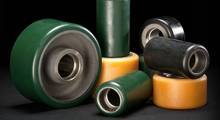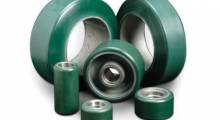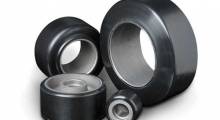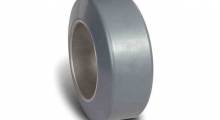Corrugated boxes are ubiquitous and essential to the distribution of goods around the world. They are affordable, recyclable and sustainable, and infinitely customizable to fit the packaging needs of any product for the specific conditions it will encounter in its journey through the supply chain.
Throughout 100+ years of integral service supporting commerce in perpetual motion, the corrugated industry has continually improved its products through advancing technology and engineering.
Corrugated Packaging Research
The Fibre Box Association (FBA), which represents 95%+ of all corrugated packaging manufacturers in the U.S., performs vital industry research and services to help its member companies support effective supply chains moving consumer goods and industrial products around the world.
One of FBA’s most enduring contributions to box makers and users is its Fibre Box Handbook – an industry “Bible” that has been relied upon for decades as the authoritative source of information about corrugated packaging technical specifications, standards and design/engineering guidance.
Since the Handbook’s 1995 edition was published, a lot has changed. Paper grades are different; recycled content now averages 52% of the fiber in an average corrugated box; and box-making equipment keeps getting better. Engineering advances have improved tolerances and package performance characteristics, helping manufacturers keep up with evolving supply chain demands to ensure safe delivery of their products.
With this in mind, the FBA determined that some guidelines for corrugated packaging design may also be due for an update. One such technical specification is based on the relationship between environmental factors and box compression strength.
Corrugated Packaging Durability
Environmental Factors are used industry wide to determine how strong a package needs to be as compared to the actual weight it must support in the environment where it will be stored and handled. The various environmental factors are fundamental necessities for package designers to establish safety factors for corrugated packaging required to withstand top to bottom compressive loads.
The FBA published “Industry Standard” Environmental Factors in the mid 1990s, based on the current “state of knowledge” broadly available from published literature. The data supporting the factors was generated in the 1960-70s using commercially available substrates of that era. To validate or update this data, FBA funded technical research to revisit stacking pattern impact to BCT.
The study performed by the Rochester Institute of Technology looked at columnar aligned, interlocked, and hybrid stacking patterns compared to single box BCT and tested two board grades (32 ECT and 44 ECT C-Flute) to determine current values.
Compression loss associated with columnar aligned stacking within this study exceeded the current values from the Fibre Box Handbook, whereas the data for interlocked stacking pattern BCT vs. single box BCT was consistent with current values in the Fibre Box Handbook. Data from the hybrid pattern suggests some improvement in BCT retention may be realized by column stacking the bottom most layers of a unit load.
Based on the data gathered through this project, the FBA may consider increasing the upper end of potential compression loss for columnar aligned stacking in its next Fibre Box Handbook edition, due for publication in 2025.
Article topics
Learn More










